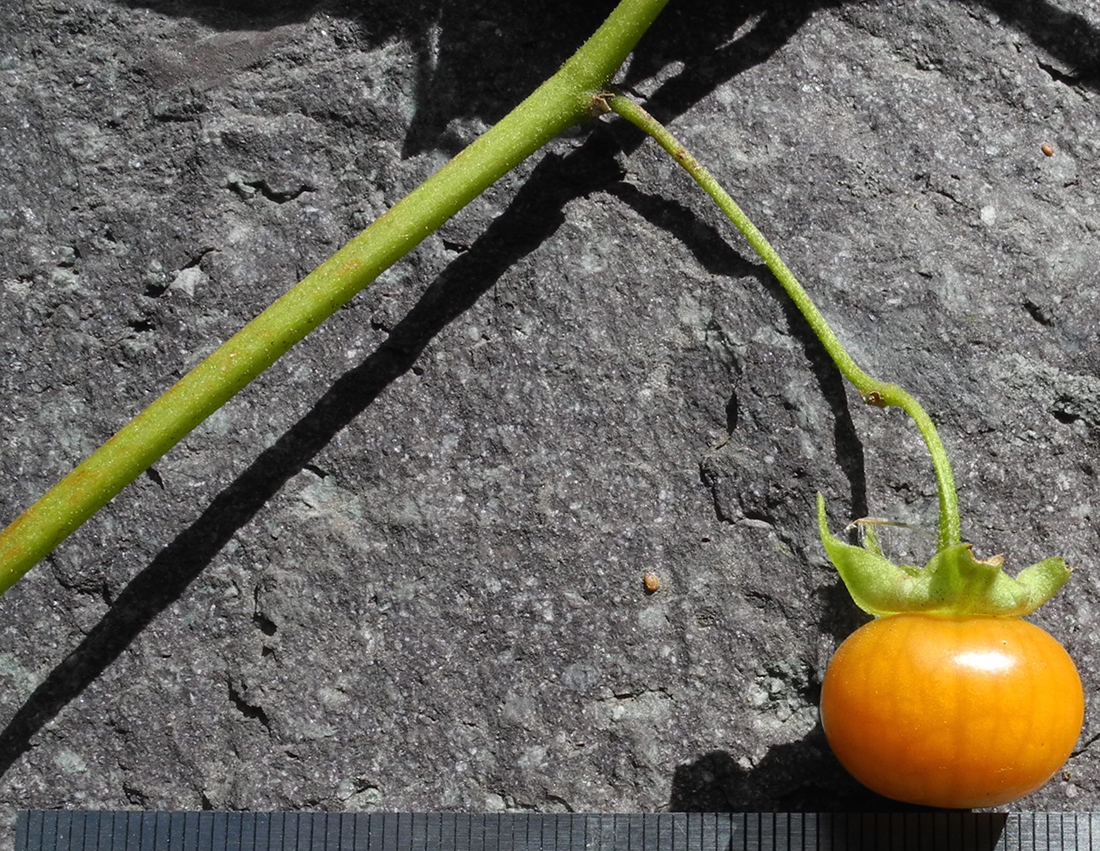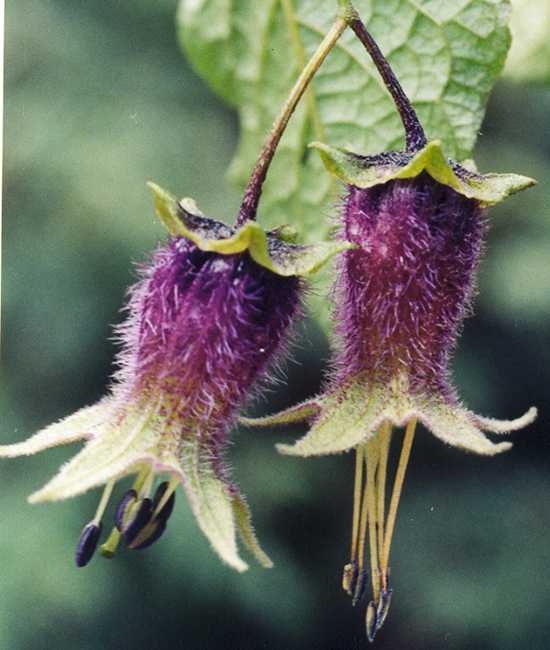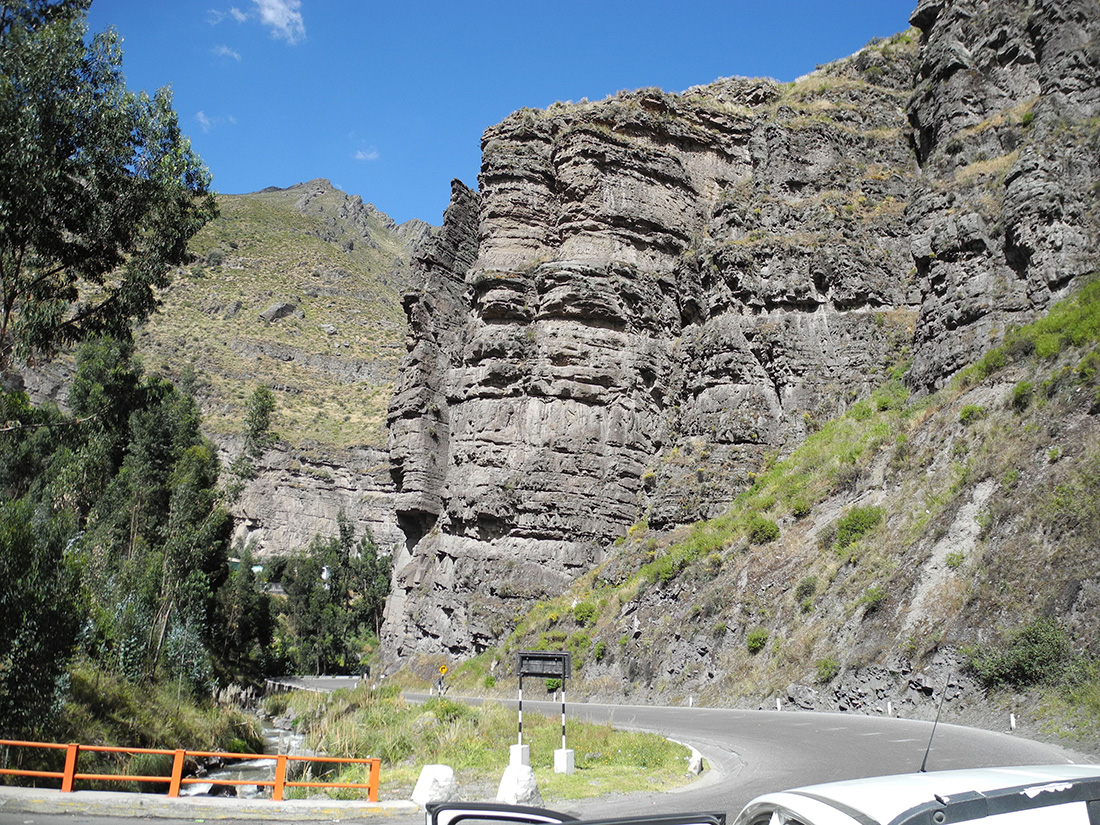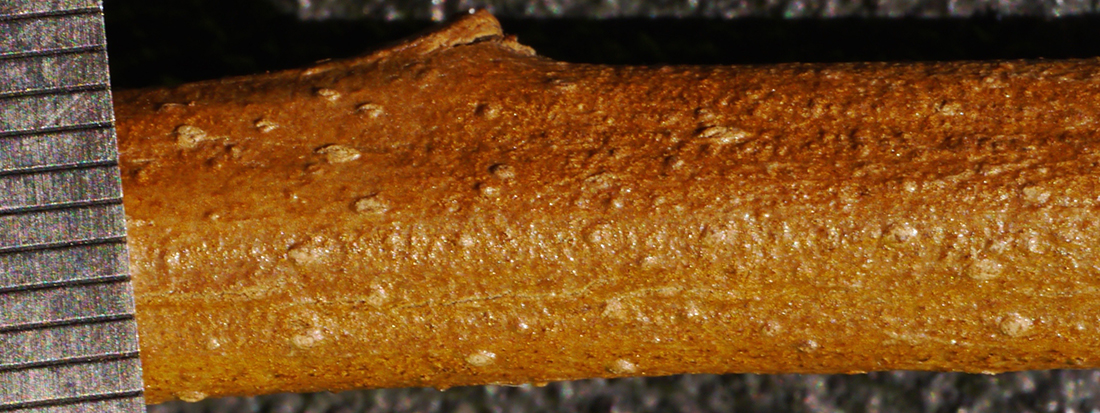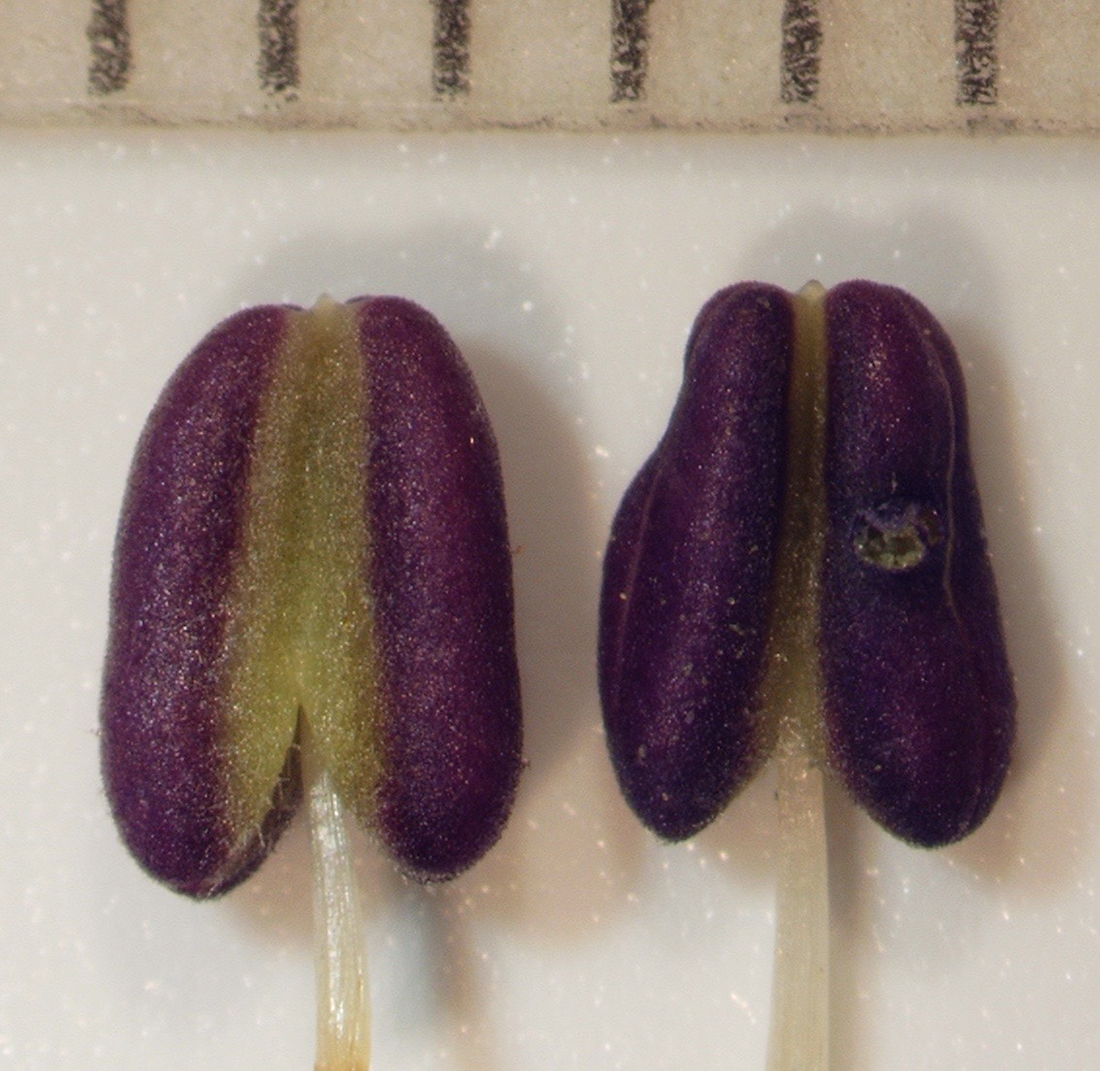| Character |
Description |
Figures on this page |
Habit & Height |
Woody shrub to 3 m |
|
Branches, young |
finger and dendritic hairs (sparse to dense), the hairs glandless |
|
| older |
to 8.2 mm diam (Mione et al. 880) |
|
Leaves, size |
leaves single, paired or verticillate; usually ovate but variable in size, shape and margin. |
|
| shape |
|
|
| hairs |
glabrate to sparsely pubescent with finger and dendritic hairs |
|
| petiole |
to 35 mm |
|
Inflorescence |
2 - 4 flowered |
|
| peduncle |
|
|
| pedicel |
|
|
Calyx at flowering |
green and / or purple |
Figure 1 |
| shape / position when flowering |
rotate to slightly concave;
the collection I made in department Moquegua has a bowl-shaped calyx as shown in Figure 4. |
|
| at fruit maturity |
31 mm diameter (field observation 726) |
|
Corolla color |
bicolored, proximal 2/3 purple (sometimes pink or yellow-green) and distal 1/3 pale-green or cream |
1, 2, 3, 4 |
| shape and size |
urceolate-tubular, the tube (not including the limb) 1.6 - 2.5 cm long,
the limb planar (not recurved) |
1, 2, 3, 4 |
| lobes / lobules |
10 total: the lobes alternate with the inconspicuous lobules.
Lobules sometimes not evident (Mione et al. 612). |
1, 2, 3, 4 |
| hairs |
vesture of tube externally variable, dense to sparse, finger to dendritic trichomes to 1.1 mm long |
1, 2, 3, 4 |
Stamen length including anther |
26 - 36 mm long |
|
| length stamens exserted beyond distal end of corolla (applicable if corolla has a well-defined tube) |
0 - 12 mm |
1, 2, 3, 4 |
| radial thickenings |
no
|
612 from Dept Lima was dissected carefully |
| base expanded laterally? |
no |
fresh flowers, from plant grown for study at CCSU, Mione et al. 880, careful dissection while observing thru microscope, Oct 2017 |
| filaments |
proximal 25 to 30 % villous
(the collection from Moquegua, Mione et al. 795, villous along proximal 7%) |
|
| anther color |
blue or black on herbarium specimens;
purple with a green connective visible on outer face (fresh flowers, grown for study at CCSU, Mione et al. 880)
|
1, 2 |
| anther size |
3.3 long X 2.2 mm wide |
(fresh flowers, from plant grown outdoors at CCSU 2017, Mione et al. 880) |
| anther mucronate? |
yes |
Figure 22
(fresh flowers, from plant grown for study at CCSU, Mione et al. 880) |
| insertion of filament into anther |
directly under the anther
|
Figure 22 |
| staggered anther dehiscence? |
yes (field observation 617) |
|
| pollen grain size |
|
|
| corona? |
no |
|
Stigma |
darker green than the style, 0.75 mm X 1 mm, capitate |
|
| Style |
|
|
| Ovary |
green, 2.5 mm high X 2.9 mm wide, the disk pale-yellow on a hermaphroditic-phase flower and occupying 43% of the height of the ovary |
plant grown for study at CCSU, Mione et al. 880 |
Nectar |
clear: nectar drawn into a microcapillary tube from a pistillate-phase flower, the tube was then placed on a white background and viewed both with unaided eyes and then with a dissecting microscope
orange: in greenhouse, January 2018, Mione et al. 880, no mistake, several flowers |
plants grown for study at CCSU,
Mione et al. 880 |
| Herkogamy |
Yes until filaments fully elongate, and then No. |
|
| Protogyny |
yes |
field observation on 612 and living/cultivated plants of 880 |
| Fruit color (at maturity) |
orange observed both in Department Lima, Peru and greenhouse
(almost certainly an error: Macbride [1962] berry white or rarely blue) |
Figure 3 |
| Fruit Size and Seeds per fruit |
8.5 X 18 mm contained 196 seeds
13 X 18 mm contained 216 seeds
|
Mione et al., 880 |
| Seed Size |
|
|
| Mione's collection numbers of this species |
612, 617, 795, 880, 884 |
|
For other descriptions see |
Hooker (1845, Hebecladus biflorus with color plate) and
Macbride (1962, H. bicolor, H. intermedius) |
|
